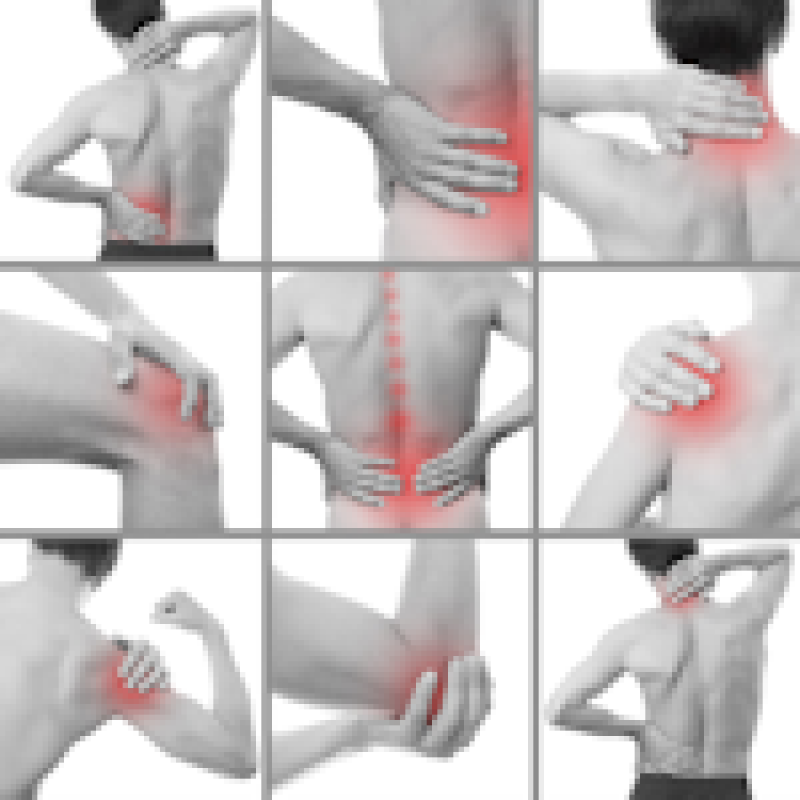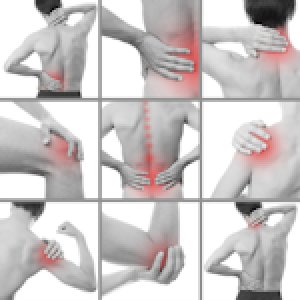
A lot of people experience varying levels of pain as a result of their time spent in the gym. Even a short, low intensity workout can cause you to become sore, provoke muscle spasms or in rare cases, can even cause injuries.
It’s important to know the most typical types of pain that can occur during your workouts, regardless of the intensity of those routines, or your physical condition.
The process is twofold:
- We need to learn how to identify what type of pain we’re experiencing.
- We then need to learn how we should respond to that pain.
The difficulty here lies in distinguishing one type of pain from another. For a lot of people, their body will just hurt after or during a workout. There’s no discrimination between what “type” of pain they feeling. It’s just pain.
That’s understandable, but I want to encourage you to analyze that pain a little more proactively, so that you can take the correct course of action and avoid making the pain worse, or possibly injuring yourself.
Here are the three most typical types of pain you’ll feel in the gym and how to identify them.
Soreness
Soreness is one of the most typical types of pain you’ll deal with as a result of a workout, especially those who haven’t worked out in a long time, or are just starting.
Most people can distinguish just being sore, from sharp irritating pain, but here are a few things that would characterize it:
- Dull pain concentrated in the muscles that were worked.
- Gets more intense if you press and rub on the area.
- Gets more intense if you flex the muscle that if affected.
- Can often cause your arms to feel shaky or give you “jello arms.”
These symptoms can occur during a workout, but are more often felt during the 1-3 day period after the workout that causes it. What is actually causing it is the tearing of the muscles created by the exercise. The soreness then occurs whenever they are being repaired. So in a sense, all this means, is that what you’re doing, is working!
Muscle Spasms or Cramps
Muscle spasms, though they can cause soreness are a bit more serious than your typical sore muscle. Often occurring in back muscles, they’re marked by a much more concentrated and sharp pain. This pain is usually identifiable by that sharpness and by simply being more difficult to deal with, causing greater discomfort.
With soreness you can usually continue exercising and not feel “injured”, while the pain caused by muscle spasms will make it difficult to use those muscles without the pain requiring you to rest.
Here are the most basic characteristics:
- Sharp, concentrated pain.
- Often happen quickly and can cause a sensation of your muscles contracting or pulling.
- Made worse or intolerable by further exercise.
- More uncomfortable than typical soreness.
You’ll usually experience muscle spasms during a workout, requiring you to either rest, or abandon your routine altogether. We’ll look more at how to deal with them later.
Joint Aches and Pain
Pain in your joints will usually develop over a period of time as a result of bad form or high impact workout routines. You won’t have a moment where you notice it getting worse, but rather will gradually develop difficulty with certain movements involving those joints.
This pain is usually easy to identify since it is concentrated to those joints and will intensify with movement.
- Concentrated at certain joints.
- Intensifies as those joints move.
- Will usually develop over a longer period of time.
- Can cause a clicking or friction effect in the joint.
Joint pain is usually less of an issue for younger people, but it can still become a problem if your form is poor, or if you’re doing high impact workouts involving joints that bear a lot of weight, like your knees. If your joint pain is part of a medical condition like arthritis, you’ll need to consult your physician before tackling a workout strategy.
Pain Management and How to Deal with Each Type
Now that we’ve covered how to recognize each of these different types of pain, I want to talk about how to deal with them and what the proper response should be.
Keep in mind; this is all within the context of pain that is a result of your workout, and nothing else. If you have this kind of pain, you need to rule out the possibility that it is being caused by something outside of your gym routine before you apply these approaches.
In short, this isn’t meant to be medical advice. This is still just exercise strategy.
Dealing with Soreness
As I’ve already stated, basic soreness is a good thing. It means that you’ve worked hard and that your body is responding to it positively.
When you are sore, make sure you give yourself a day or two of rest before you exercise again, or if you do exercise, target different muscles to avoid working out the ones that are sore before they’re completely healed.
Dealing with Muscle Spasms and Cramps
Muscle spasms and cramps come on quickly, and should be dealt with by stopping your workout and resting immediately. If you can massage the affected area, that will help, but don’t be afraid to abandon your workout for a few hours, or even a day.
Be sure to stretch adequately before and after a workout routine, as that will often prevent muscle spasms entirely.
Dealing with Joint Pain
Joint pain takes some time to develop and it can likewise take some time to fix. The best response to painful joints to simply not work them, or when you do, make sure the work is light and easy.
You may even need to take some time off from physical exercise entirely, depending on the severity of your pain.
Consult your doctor or a personal trainer for a more exact estimate of how much time you’ll need, though keep in mind that regardless of the “official” diagnosis, the best thing for it will be to let it rest and heal.
Ashley Porter is a professional blogger that shares fitness and nutrition tips. She writes for Fitness 19, an affordable fitness center with locations nationwide.
Instantly download FREE guides from losethebackpain.com:
- 7 Day Back Pain Cure - LoseTheBackPain.com highly effective treatments that you likely have never heard about.
- Try Heal-n-Soothe Free - A natural alternative supplement developed by Livingwell Nutraceuticals and The Healthy Back Institute to help you relieve pain and inflammation.
- Looking for ways to relieve the pain without prescriptions? Consider trying a convenient medication that can make your pain disappear near instantly like Rub On Relief.


